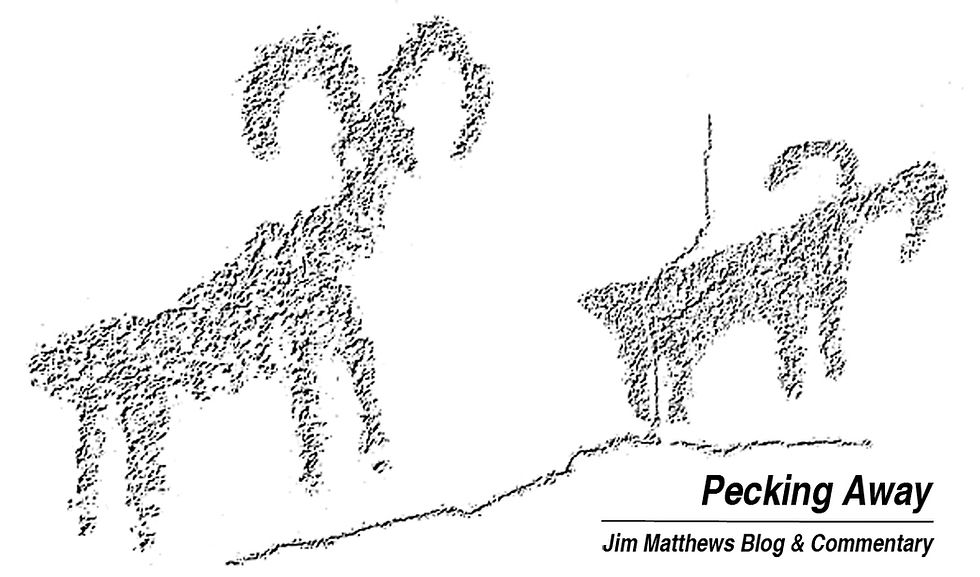Bighorn sheep population at level that could remove it from endangered list
- Jim Matthews
- Jan 15, 2017
- 3 min read

By JIM MATTHEWS
www.OutdoorNewsService.com
The peninsular bighorn sheep population is now at the level that will remove it from the endangered and threatened species list if the numbers remain at these modern highs. During aerial surveys in mid-November, the Department of Fish and Wildlife counted a total of 588 bighorns and estimated the population was nearly 800 animals, according to Kevin Brennan, a biologist with the DFW who participated in the surveys.
Brennan said this was only the second time the agency counted over 500 different sheep in the survey, and estimated the population over 750 animals. This population level is one of the criteria that could upgrade their status from endangered to threatened and then removal from the list entirely.

If the sheep population stays above 750 animals for another six years, along with 25 ewes being present in the nine recovery regions (which it has been for the past two surveys), the sheep listing will drop from endangered to threatened. If the population remains above 750 and the ewe numbers remain above 25 in each of the areas, they could be removed from the list entirely and considered fully recovered under the DFW’s recovery plan.
“We saw sheep in canyons where we haven’t seen them in almost 60 years,” said Brennan, showing that not only are overall numbers growing, but the sheep are recolonizing ranges where they haven’t been present in recent history.
Brennan, who started working with sheep in 1992 said the population reached a low point in the mid-1990s, when the estimate dropped below 280 animals.
“We reached to low point in 1996, and we were in danger of losing them in the mid-1990s. It got that bad. So to see over 500 sheep is a big deal,” said Brennan.
The peninsular subspecies of bighorn ranges from the San Jacinto Mountains in the north, south into Baja California, and the highest numbers have been in the Santa Rosa Mountains adjacent to Palm Springs and the Salton Sea. That area is where nearly half of the desert sheep were counted this year.
The last survey was made in 2010 when slightly more sheep were counted, but the population estimate was virtually the same as the 2016 count. There were no flight surveys conducted in 2012 and 2014 because a tragic helicopter crash grounded the survey program until new protocols were in place. The fact that the sheep population has maintained goal levels and continued to expand their range back into historic areas is good news for the recovery efforts.

It is hunter’s license and tag dollars that have and continue to fund these surveys and the recovery efforts. Once the sheep are removed from the endangered and threatened species lists, the DFW could recommend limited hunting for this subspecies. Nelson bighorn sheep, which live throughout the Mojave Desert, in the Inyo and White mountains, along the Colorado River, and in the San Gabriel Mountains, are currently the only subspecies of bighorn hunted in California.
While only 17 bighorn tags were issued over the state’s nine hunting zones for the 2016-17 season, there were over 14,000 applications for those tags. Over 2,000 of those applied with the maximum number of bonus points -- meaning they had applied for a bighorn sheep tag every year since the first hunts were held in 1987. (Before that there has not been a legal sheep hunt in 114 years.) Every hunter pays the $8.13 non-refundable application fee, and those successful in the drawing paid $407.50 for the tag in 2016-17 seasons. It has been this money that has paid for the peninsular sheep surveys, pathology work, and management efforts.
END
[Jim Matthews is a syndicated Southern California-based outdoor reporter and columnist. He can be reached via e-mail at odwriter@verizon.net or by phone at 909-887-3444.]























Comments